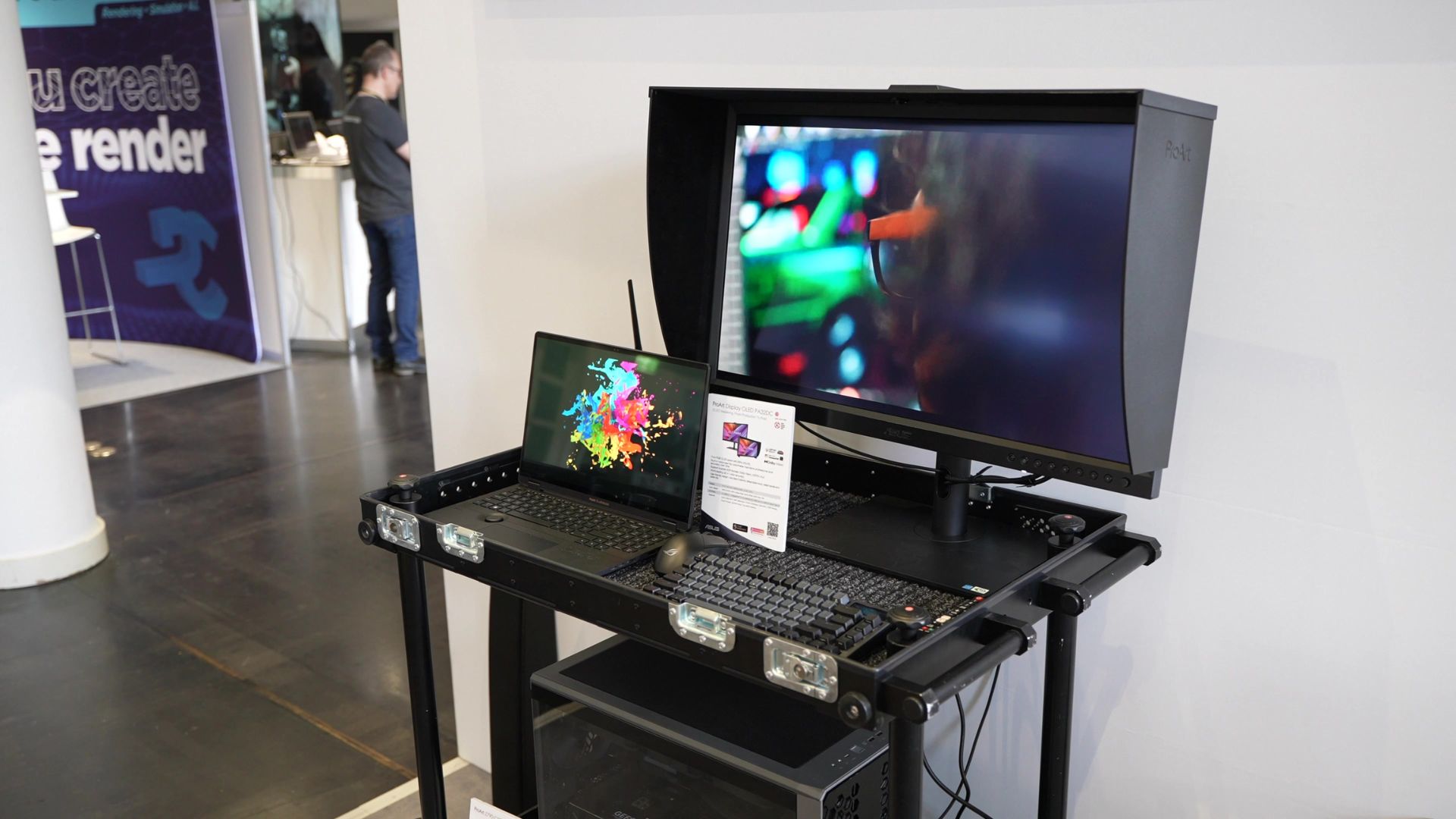
Looking for a new monitor? Victor Perez gave us an excellent Master Talk on what makes a good monitor at FMX, so let's run through some of the key features you should know when you are looking for a new professional monitor.
There are so many different monitors on the market, so it is hard to narrow down what exactly is the ‘best’ monitor. The good news here is that high-quality monitors are more affordable than ever before. We are going to compare the following specifications to ASUS ProArt Display OLED PA32DC monitor since it is a good contestant when it comes to professional monitors.
Find out what makes a good monitor from the award-winning VFX supervisor Victor Perez
Resolution
Let's start right back at the basics. It’s the first thing when looking at the technical specifications, as it depends entirely on what your PC’s graphics card is capable of. There are three main monitor resolutions: 1080p, 1440p, and 4K. Full HD monitor (1080p) has 1920×1080 pixels, which is more than enough for a compact 22-24” form factor. Any bigger than that and you end up with an undefined image.
At 2560×1440 pixels, 1440p gets you a boost of quality, without going as far as the hardware-intensive 4K. 4K, also known as UHD, has a resolution of 3840×2160 pixels. This provides four times as many pixels as 1080p for ultra-sharp images. Be aware that, there is no point in getting a 4K monitor if your PC is only capable of running 1080p content. This resolution requires high-end cards like the NVIDIA RTX 3080, AMD RX 6800, and above.
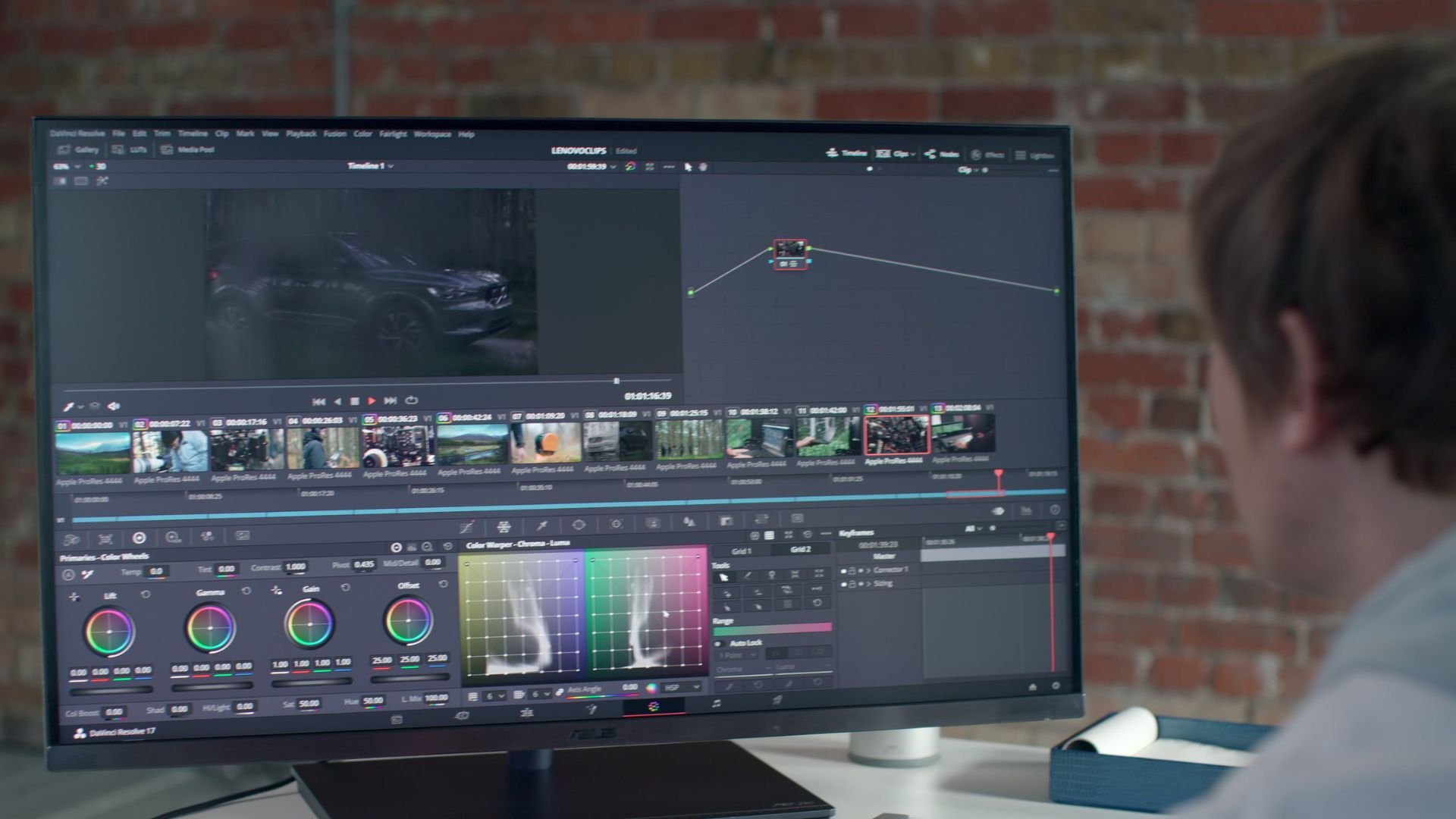
A 4K monitor has the sharpest image, but it also requires hardware-intensive technology to run it
Panel: LCD vs OLED
LCD monitors are widely used for editing since they offer high contrast ratios, brightness levels, and color-gamut compatibility, so why should you consider a monitor with an OLED panel?
OLED (Organic Light-Emitting Diode) means the panel self-illuminates the light. Unlike the commonly used LCD panels, the OLED panel doesn't require any back illumination. This means the blacks in the OLED panel are actual blacks since the black pixels are turned off completely. Asa a result, OLED doesn't provide the brightest monitor, but it definitely wins when it comes to image quality.
Try this with your monitor: Display an image on your monitor that showcases something really bright next to a black canvas and switch off the monitor. If you can see a difference in the blacks, it means there is some sort of a black illuminating light which means the black is really not black.
Contrast Ratio and Bit Depth
The right panel matters when we talk about the contrast ratio. Put simply, it basically tells you how dark are your black levels and how bright are your highlights. This is important when you are displaying blacks next to something really bright. To make sure you don't get any 'bleeding' of the highlighted area into the black areas, you want to make sure you are using the right monitor for that.
The contrast ratio for the ProArt PA32DC monitor is a million to one, which means the darkest pixel is a million times darker than the brightest pixel. The higher the number the contrast ratio is, the more detailed and sharper the image is. This means scenes that are supposed to be black or very dark in general are more lifelike and don't appear that washed out.
For the monitor to be able to keep all the detail that you have in the blacks (shadows and dark areas) as well as in the highlights, it needs a decent bit depth. Every colour pixel in a digital image is a combination of the three primary colours: red, green, and blue (RGB). Each primary colour can have any range of intensity values specified by its bit depth. For example, the ASUS ProArt PA32DC monitor comes with a true 10-bit depth which means, it can display 10 bits per pixel, for 1024 shades of RGB colour. Cube that (for Red, Green, and Blue) and you get to those 1.07 billion shades, which is the standard for HDR work.
ASUS ProArt Display OLED PA32DC monitor features true blacks making the picture sharp and detailed
Colour spaces and gamut
Why do you need to have multiple colour spaces (sRGB, Rec709, Rec2020, DCI-P3 etc) and how do I know which one is right for my project? The colour space informs a specific range of colours and luminance values that a monitor can display to reproduce colour information. Many of the displays are interpreted through an RGB chromaticity diagram, then processed and displayed on digital/analog images.
To further break the colour into ranges, colour gamut comes into the picture. A colour gamut is the defining range of chromaticities in three-dimensional space by its HSL (hue, saturation, and lightness). Essentially, the wider the gamut, the more colors the artist has to play with. Wider gamuts such as Rec.2020, Adobe RGB, and DCI-P3 provide exponentially finer colour detail than older standards like sRGB / Rec.709, see below.
Delta Error
Colour accuracy is everything and should definitely not be dismissed when looking for a professional monitor. Delta Error (Delta E) measures the amount of change in the visual perception of two colours. This measurement provides valuable insight into how colour accurate a monitor is.
Try and look for a monitor that is a factory-calibrated model with colour accuracy of less than Delta E < 2. The average person won't notice a Delta E error that's less than 3. The ProArt PA32DC monitor has Delta Error of less than 1, so this is a very colour-accurate monitor.
Calibration
Victor mentions how you should calibrate your monitor as often as you can. Let's say once a week is enough, but sometimes you just forget. This is why it is very handy to have a monitor that comes with a built-in motorised colourimeter that can do it for you. On the top of the ProArt PA32DC monitor is a small sensor that you can program to calibrate to your liking. This means you don't have to remember to calibrate because the monitor does it for you!
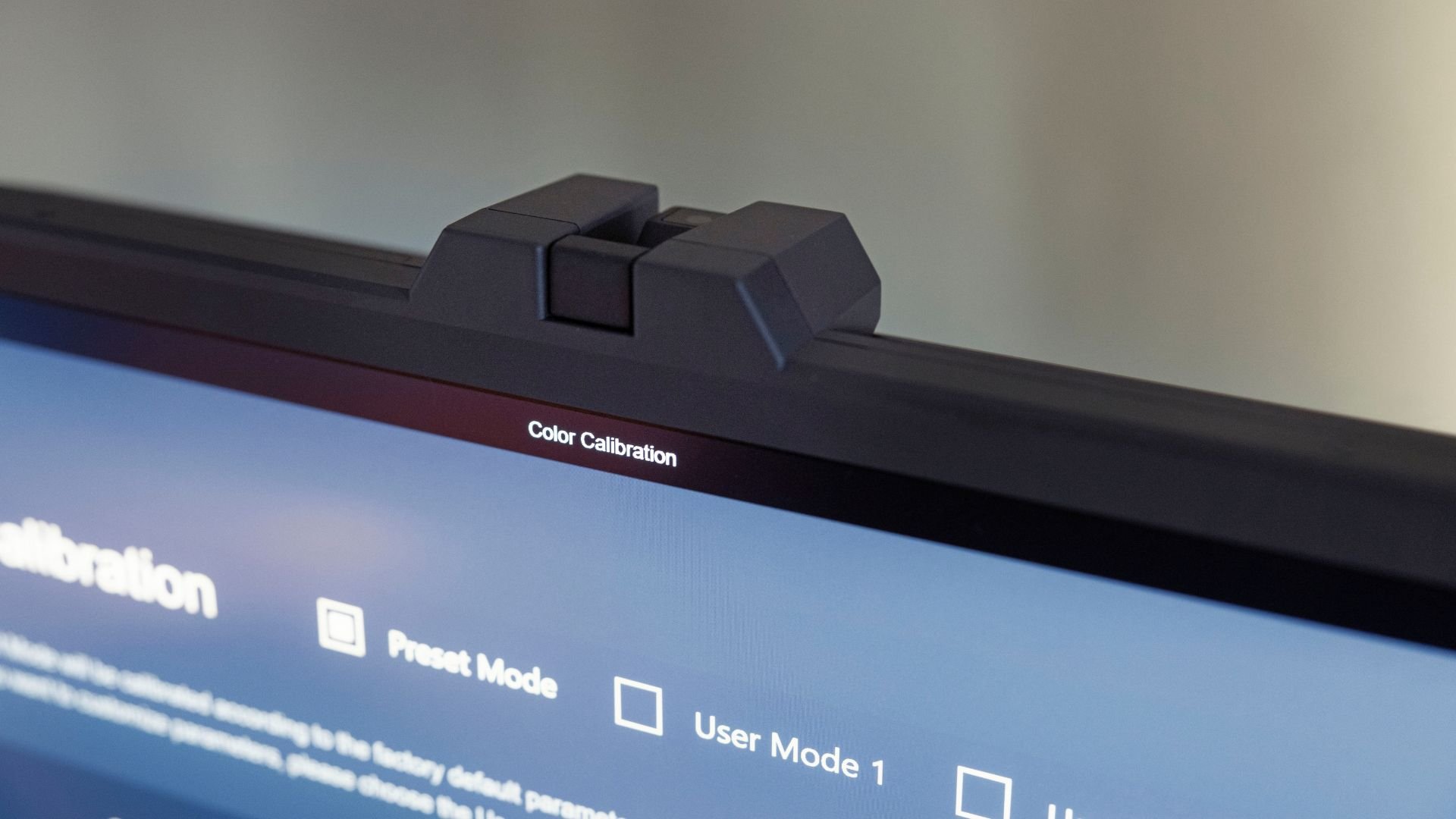
The ASUS ProArt Display OLED PA32DC has a built-in motorised colourimeter that calibrates the monitor for you
Refresh rate and response time
The refresh rate is measured in hertz (Hz). It tells you how many times the monitor will refresh the screen each second. A higher number means a better viewing experience. To give you a comparison, basic displays, and televisions hit around 30Hz. The ASUS ProArt PA32DC monitor hits up to 60Hz.
Response time tells you how long it takes each pixel to change from one setting to the next. This is commonly measured in milliseconds (ms). For instance, the ProArt PA32DC has a response time of 0.1 milliseconds which is the motion ability of the monitor. It is important because during fast motion a slower response time can lead to motion blur. If you are after smooth transitions and crisp images, a high refresh rate combined with a fast response time will be the answer to that.
Other features
Other features that are just nice to have when you are working on different locations are different mounting options. You can either mount the monitor using the VESA mount for different viewing angles when working on a set. You can also use the two separate stands the monitor comes with.
For connectivity ports, you should be looking for the following:
- HDMI and DisplayPort are standards
- HDMI 2.0 is a must
- DisplayPort 1.4 is current, but 2.0 is coming soon
- USB Type-C and Thunderbolt can offer support for DisplayPort and HDMI via adapters
- Audio and earphone jacks
What is quite cool about the ProArt monitor, it comes with a handle that enables you to carry the monitor easily anywhere. The back also features a set of connectivity ports and a surface to clip your cables into. Depending on the environment you are working with, you can attach a hood around the monitor to block any ambient light for a clear view.
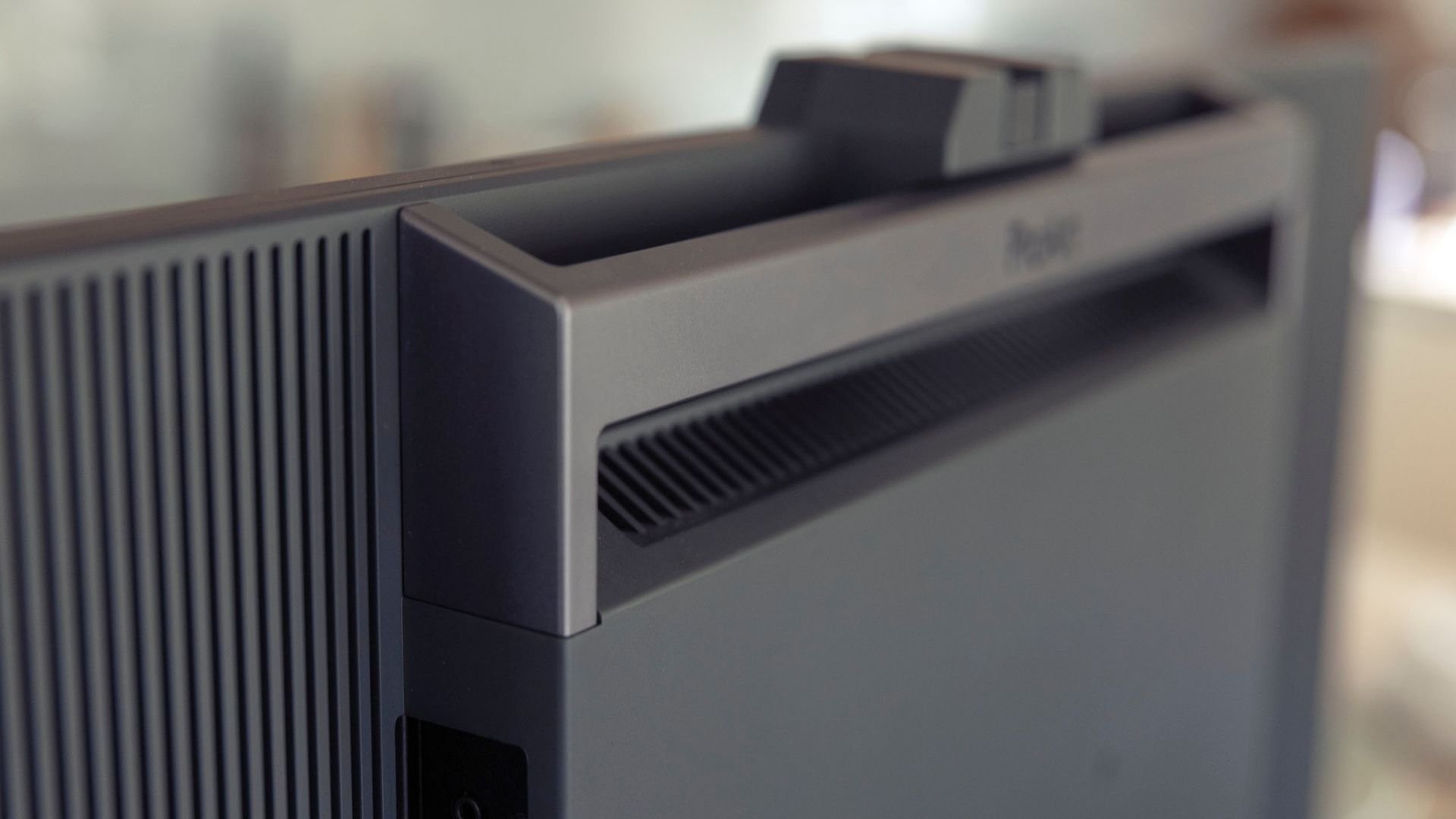
The PA32DC comes with an ergonomic handle in the back so you can easily carry the monitor anywhere
Tags: Production Monitors
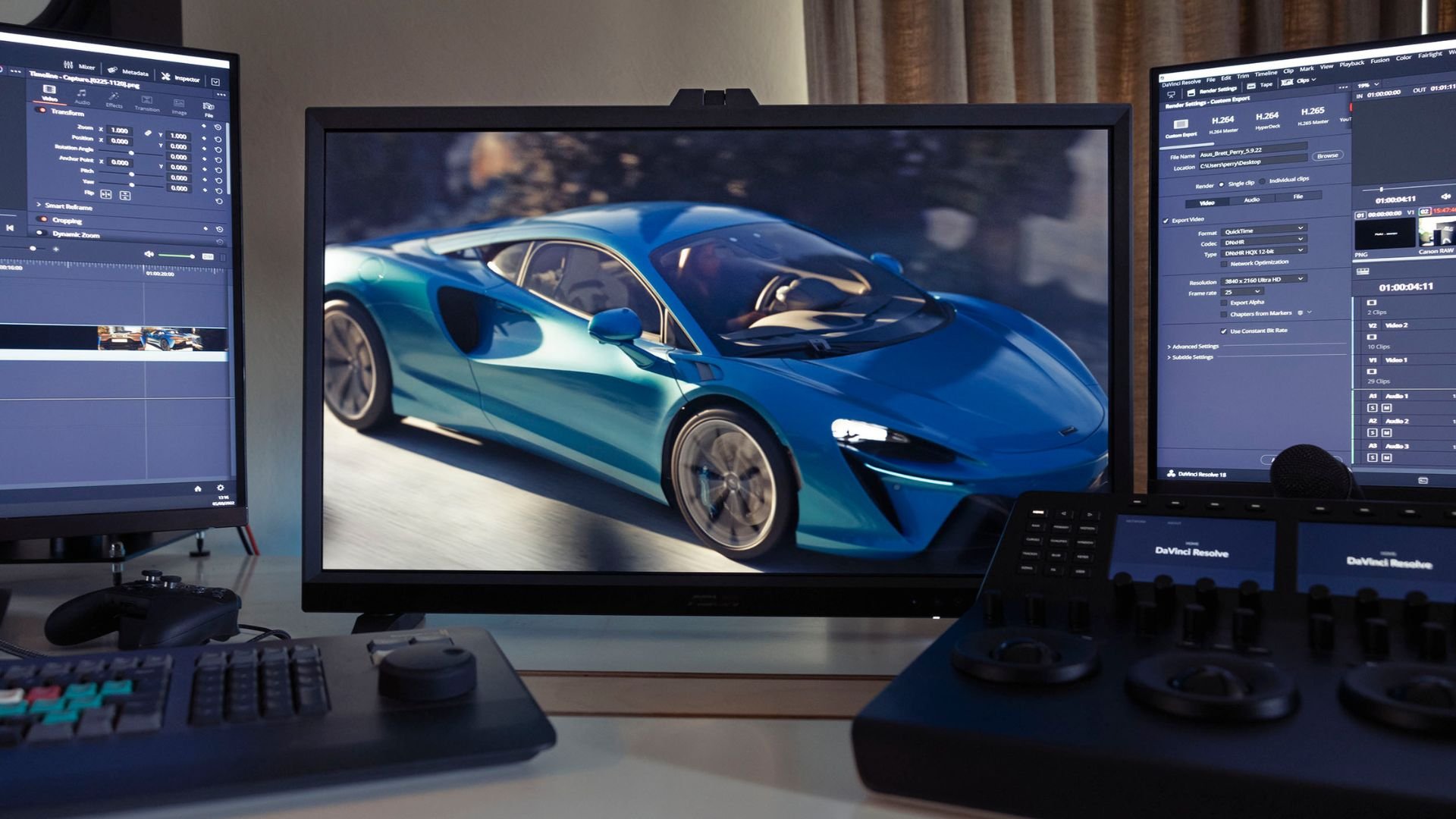


Comments